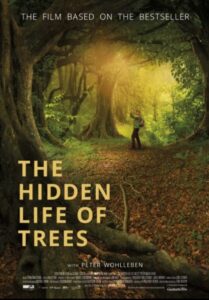

When German forester Peter Wohlleben’s book “The Hidden Life of Trees” was translated and published in English a couple of years ago, it became an instant American bestseller. The U.S. had just elected a president for whom wildlife preservation was anathema: his plans to ravage our national parks seemed to be put into practice with alarming speed.
I remember picking up the book and marveling at amazing facts already on the first page: apparently, one of the oldest trees on earth is a Swedish spruce! It’s almost 10,000 years old! Still living! How come I, a born and bred Swede, never heard of this magical tree? Was there a sequoia-like mastodon hidden somewhere in the secretive North?
Mr. Wohlleben’s wonders – he subtitled his book “discoveries from a secret world” – seemed almost fantastical to a layperson. He wrote that trees make a communal decision whether or not to bloom a certain year; that the roots function as a tree’s brain; and that mature trees nourish “babies” as well as “dead”, moss-covered stumps.
As portions of Peter Wohlleben’s fact-laden book has been turned into a fascinating documentary by German director Jörg Adolf, many of the author’s forest wonders make sense. Also titled “The Hidden Life of Trees”, the film uses time-lapse photography to document how seedlings grow, ferns unfurl, and wood anemones form a white carpet under still-nude beeches. Wild boars root among acorns and beechnuts, the spruce bark beetle does its damage. Cinematographer Jan Haft follows Wohlleben on his talking tours, his treks in European forests, his lectures in situ to foreign students.
And yes, Peter Wohlleben goes to Sweden and pays homage to the ancient spruce. It’s a shrub-like growth in a popular National Park. Its ancientness lies in the root system – which has been carbon-dated, and really is more than 9,550 years old.
Proper forest maintenance is Wohlleben’s major concern. Today, he manages a forest where machines are banned. If trees need to be harvested, they are dragged out of their growing spots by sturdy work horses. The movie shows the forever-damage a professional harvester causes: it compacts the soil to hard that the trampled soil can only absorb 10% of the water it used to “drink”.
And pure disdain is what our hero forester has for city planners who think asphalt and concrete can be cheered up with a handful of tree saplings.
“Street kids” he calls those doomed plants. They seldom go beyond the sapling stage, and they will never replace the mighty oaks, maples, and other tall trees that were felled to make room for the bane of modern inner cities: current heat island caused by condos, offices and parking lots.
The enemies of the street kids are all urban: the heat-inducing microclimate causes dry air, already filled with exhaust fumes. Dogs pee on these “kids” and worse. The bark is damaged and the rootball, already reduced in the nursery, can’t spread without damaging what is buried beneath. “The Hidden Life of Trees” is a lecture in “Waldpflege” (forest maintenance), as well as a biology class, and a dream of the natural forests we all deserve to return to.
